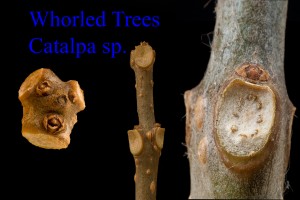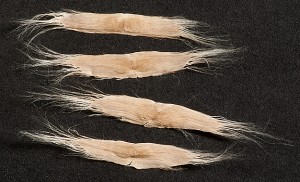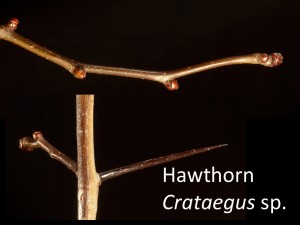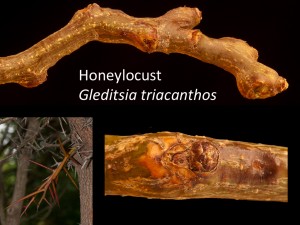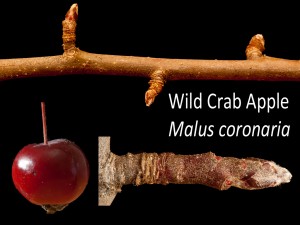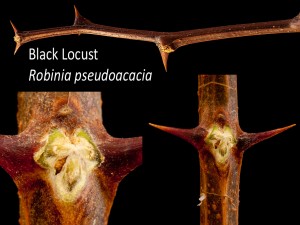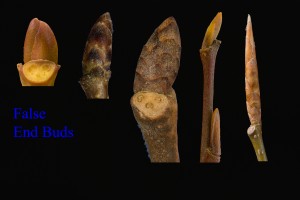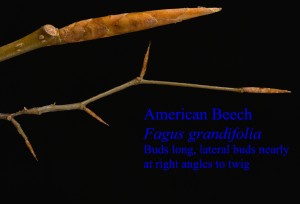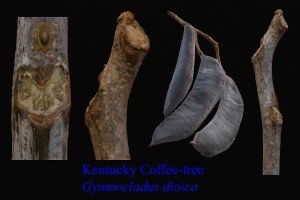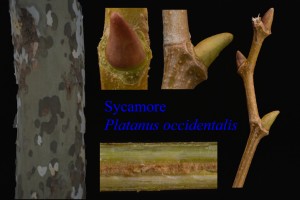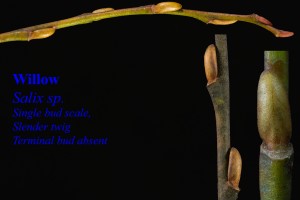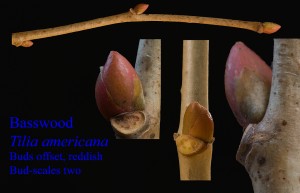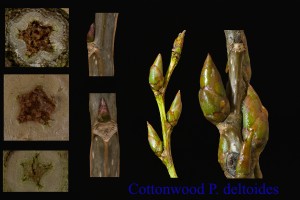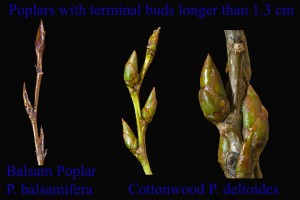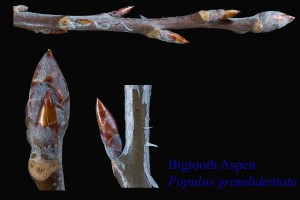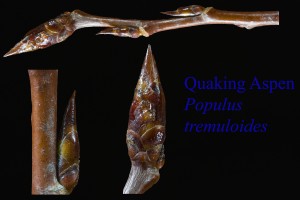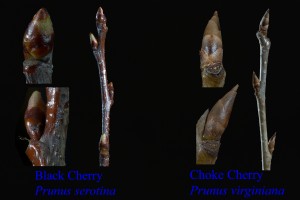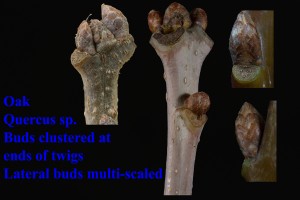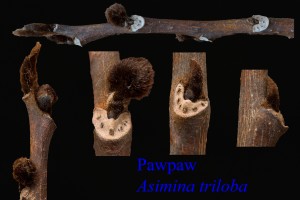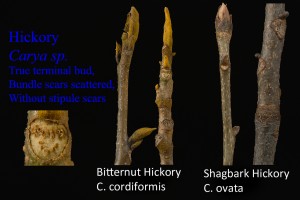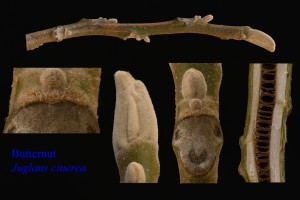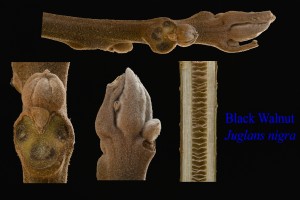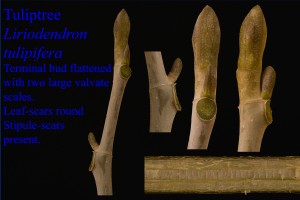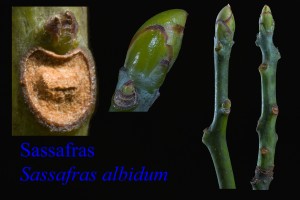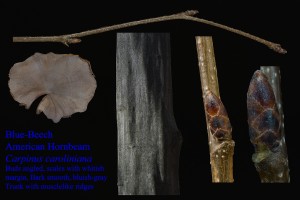
Blue-beech
Blue-beech (Carpinus caroliniana) has very slender twigs, the appressed buds are tiny and the bud scales have greenish-white edges. The bark is gray and ridged. This small tree’s trunk has the feel of a muscle, giving rise to the common name Muscle-wood.
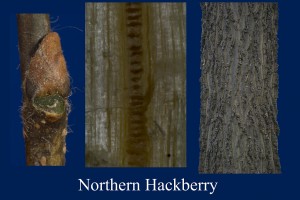
Hackberry
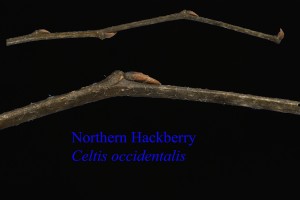
Hackberry twig
Hackberry (Celtis occidentalis) has chambered pith. The twigs are slender with flattened buds, the bud tips normally touching the twig.
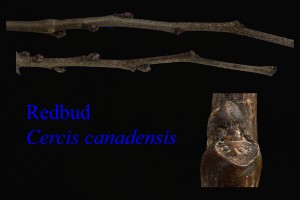
Redbud
Redbud (Cercis canadensis) is a small tree native to floodplains and rich wet bottomlands in southern Michigan. It is also widely planted as an ornamental. The buds are black and tiny so the dark zig-zag twigs of this tree appear to be dead. The rounded stalked flower buds are found on the second year and older twigs. Most trees will have a few seedpods that look like brown peapods (it is in the Fabaceae, Pea Family).
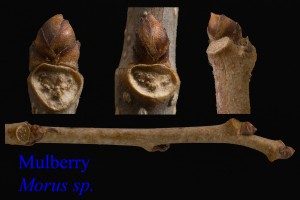
White Mulberry
White Mulberry (Morus alba) has slender twigs with the buds offset to the leaf scars. It is not native to Michigan but has been imported from China.
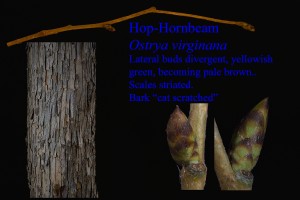
Hop-hornbeam
In Hop-hornbeam (Ostrya virginiana) the twigs are very slender, with small divergent buds. Its bud scales are striped. The bark has fine plates so it resembles a cat scratched surface.
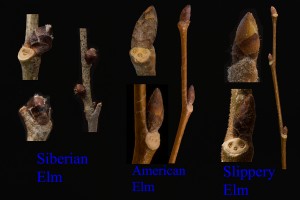
L-R Siberian, American, and Slippery Elm
American Elm (Ulmus americana) has buds that are two ranked (meaning in two rows). It has three bundle scars and bud tips without hairs.
Slippery Elm (Ulmus rubra) has buds that are two ranked. It has three bundle scars and bud tips with reddish-brown hairs. Its twigs often have conspicuous reddish flower buds.
Siberian Elm (Ulmus pumila) is native to eastern Siberia and northern China. The leaf buds are small and reddish. The flower buds are rounder. It escapes into woodlots in Michigan.
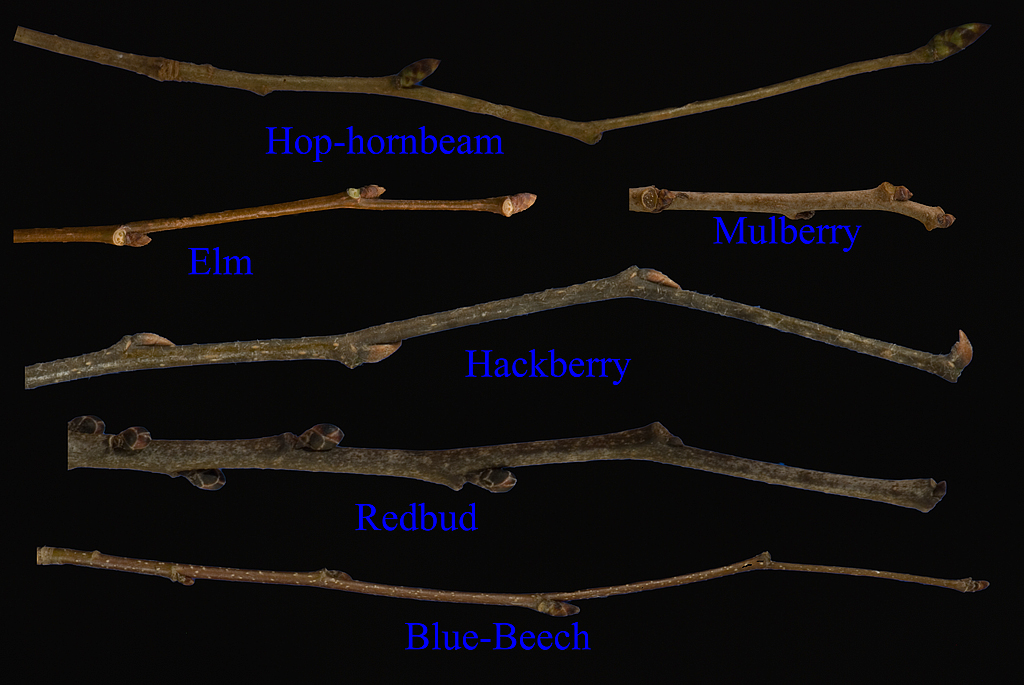
Alternate Twig Look-a-likes
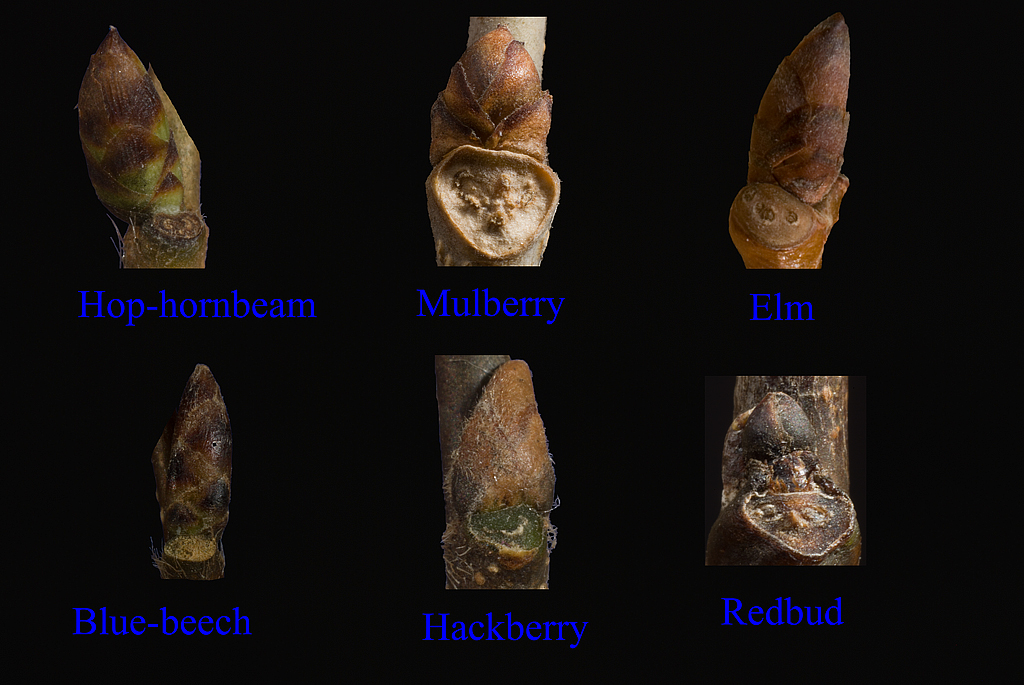
Bud Look-a-likes
Copyright 2013 by Donald Drife
Webpage Michigan Nature Guy
Follow MichiganNatureGuy on Facebook

